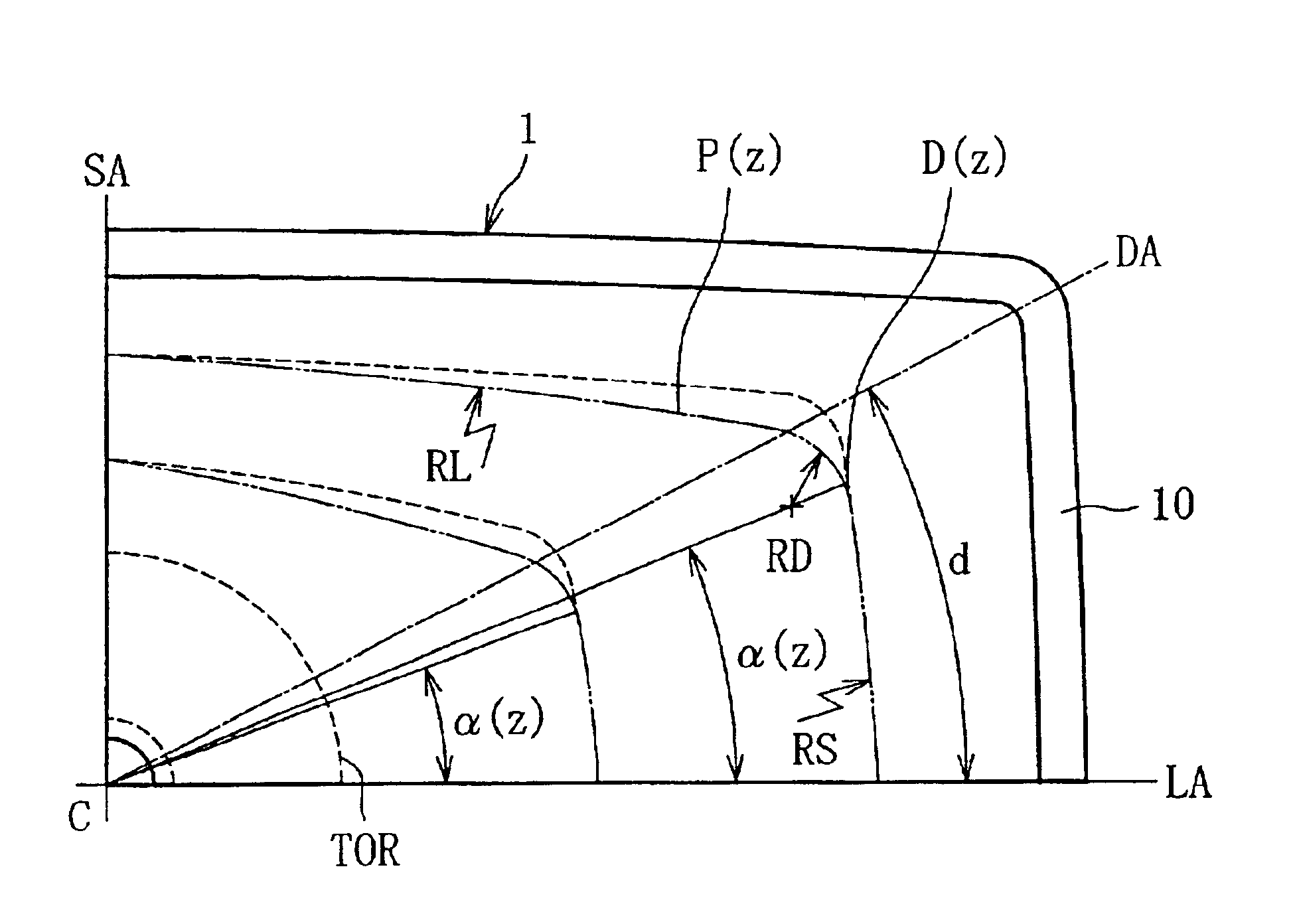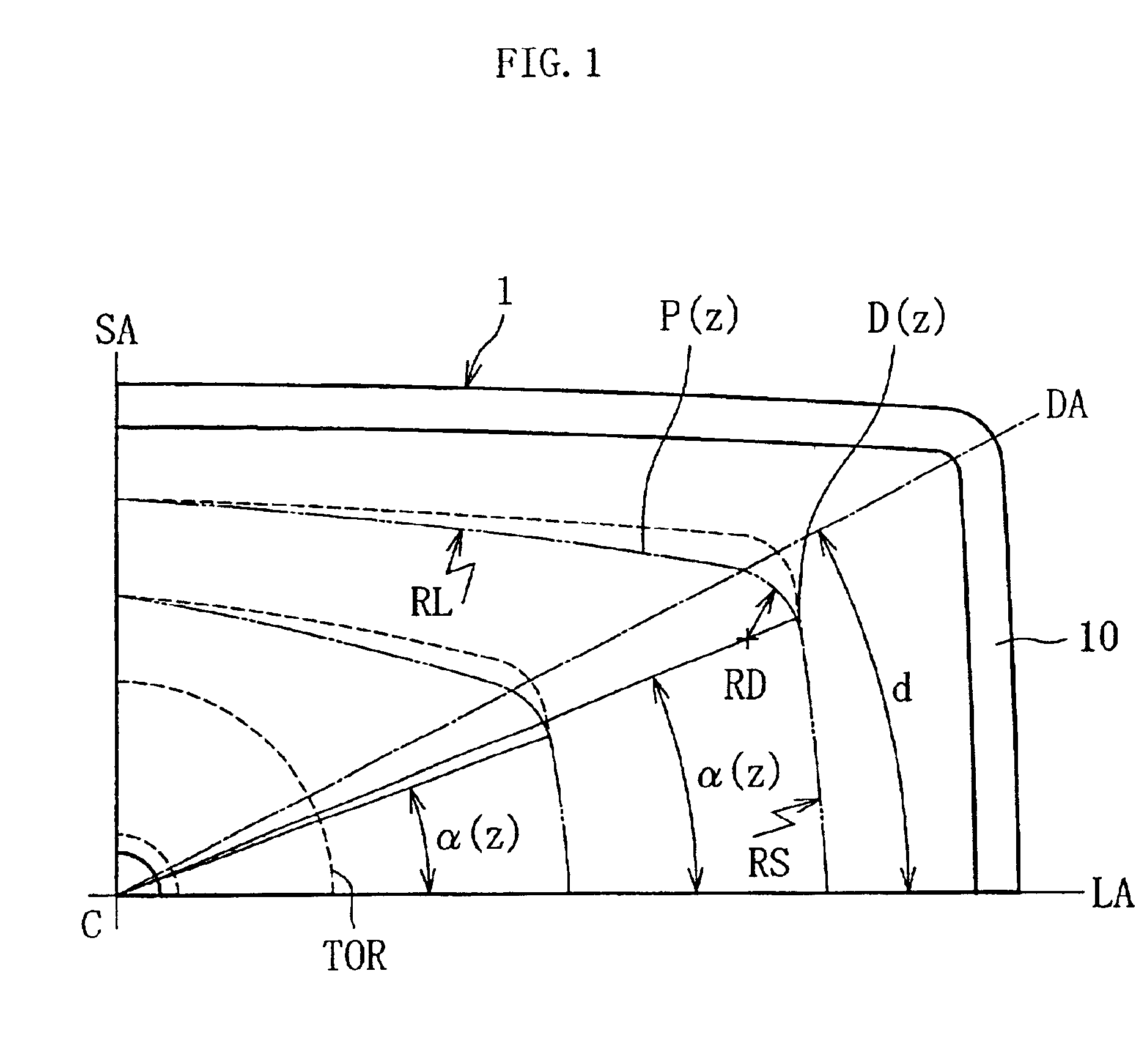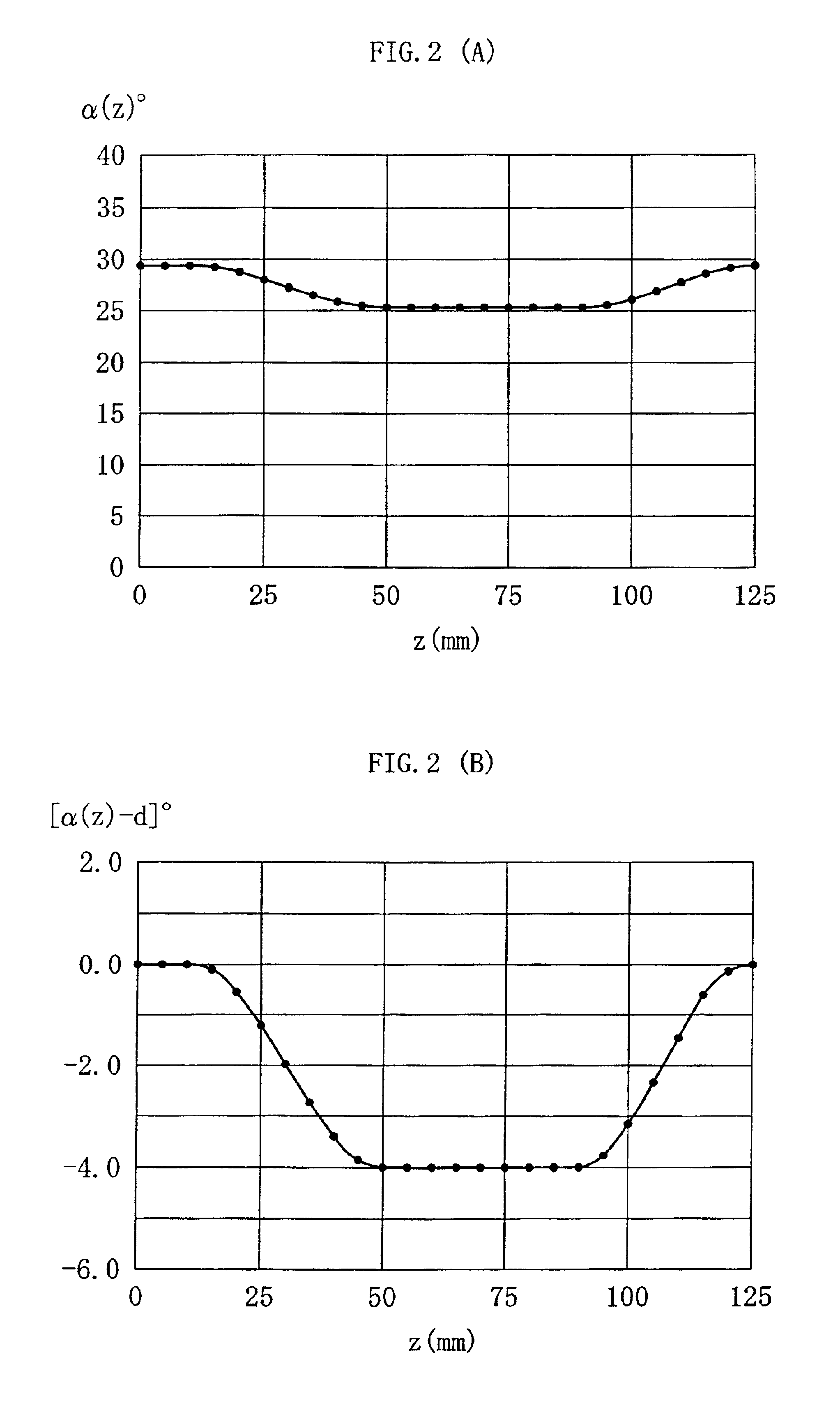Funnel for cathode ray tube
a tunnel and cathode ray tube technology, applied in the field of tunnels, can solve the problems of increasing reducing the temperature of the glass filled in the open end portion in the vicinity of the diagonal axes, and reducing the time required for filling, so as to reduce the time required, increase the press pressure, and reduce the effect of cracks
- Summary
- Abstract
- Description
- Claims
- Application Information
AI Technical Summary
Benefits of technology
Problems solved by technology
Method used
Image
Examples
Embodiment Construction
The following section describes an embodiment of a funnel for a cathode ray tube (size: 76 cm, aspect ratio: 16:9, deflection angle: 120°, and neck outside diameter: 29.1 mm) based on FIG. 1 to FIG. 4. Constitution elements common to those in FIG. 6 through FIG. 8 are given the same numerals and detailed description for them is omitted in the following description.
FIG. 1 is the first quadrant of a front view of a funnel for a cathode ray tube according to an embodiment. A chain double-dashed line shows a contour of an outer surface on a cross section P(z) of the embodiment. A dashed line shows a contour of an outer surface on the cross section of a conventional funnel for a cathode ray tube. For example, values of three arcs RL, RD, and RS at z=60 (mm) are RL=4072 mm, RD=40 mm, and RS=636 mm for the contour of the outer surface of the conventional funnel represented as the dashed line, and RL=1459 mm, RD=40 mm, and RS=933 mm for the contour of the outer surface of the embodiment rep...
PUM
 Login to View More
Login to View More Abstract
Description
Claims
Application Information
 Login to View More
Login to View More - R&D
- Intellectual Property
- Life Sciences
- Materials
- Tech Scout
- Unparalleled Data Quality
- Higher Quality Content
- 60% Fewer Hallucinations
Browse by: Latest US Patents, China's latest patents, Technical Efficacy Thesaurus, Application Domain, Technology Topic, Popular Technical Reports.
© 2025 PatSnap. All rights reserved.Legal|Privacy policy|Modern Slavery Act Transparency Statement|Sitemap|About US| Contact US: help@patsnap.com



